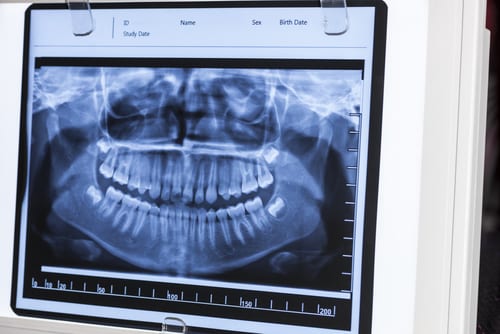Posted June 18, 2019 in Dental X-rays

Many people are aware that x-rays expose patients to radiation, but there are misconceptions about how much of it can be dangerous. What most may not be aware of is that we are subjected to both natural and man-made radiation sources on a daily basis. Soil, rock, and air contain radioactive materials which are responsible for the majority of the radiation Americans receive. Some people believe that the occasional dental x-ray exposes them to harmful levels of radioactive particles, but the real risk is quite small.
What Are Natural Sources of Radiation?
According to the United States Nuclear Regulatory Commission, people receive natural radiation from various sources that can be categorized into three groups: cosmic, terrestrial, and internal. Cosmic radiation comes from outside the earth’s atmosphere and may vary in dose depending on elevation, magnetic field, and other factors. Terrestrial radiation exists in rock and other organic matter. Internal radiation exists in all people from birth and is relatively similar between one individual and another.
How Much Radiation Do X-rays Produce?
Absorbed radiation is measured in sieverts (Sv) or millisieverts (mSv). In large doses, radioactive particles can be harmful. However, even a chest x-ray, which emits more radiation than a dental x-ray, only accounts for 0.2 mSv compared to the 2.4 mSv we take in from nature on average every year.
Do I Need Dental X-rays?
While some dental problems can be diagnosed with a visual exam, these issues are usually severe because they went untreated for some time. Dental x-rays are necessary for detecting underlying conditions that are imperceivable to the naked eye before they develop into a noticeable problem. An x-ray can be used to identify the following:
- Dental damage or decay
- Impaction
- Structural imperfections
- Oral cancers or growths
- Periodontal disease
- TMD (temporomandibular disorder)
For more information about dental x-rays or to schedule an appointment at Gentle Care Dentistry, please fill out our online contact form today!
What Kinds of Imaging Options Are Available?

Technology advances rapidly, and dental imaging has followed suit. Some dentists use traditional x-rays that are still FDA-approved for medical use, but others have opted for more sophisticated devices to deliver superior results. At Gentle Care Dentistry, our dentists use digital imaging, including Panorex x-rays and intraoral cameras.
Panorex
Panorex produces approximately 80 percent less radiation than traditional x-rays and takes a single panoramic image of the mouth, temporomandibular joint, and neck. Lead gowns are not necessary for these types of x-rays, but we provide them for all of our patients to ensure they have the best experience and optimal peace of mind. Digital x-rays are the safest and most modern option for helping patients get the care they need before their condition worsens.
Intraoral Cameras
Intraoral cameras allow dentists to take detailed images of hard-to-reach areas inside the mouth. While an intraoral camera cannot recognize issues within the jawbone or other underlying tissues in the surrounding areas, it is a valuable diagnostic tool. This type of imaging does not involve the use of any radiation, making it a safe and beneficial option for patients with dental issues that lie on the surface of the gums or teeth.
If you would like to schedule your next dental exam at Gentle Care Dentistry, please call our office at 575.524.3722.